Jon's recent articles
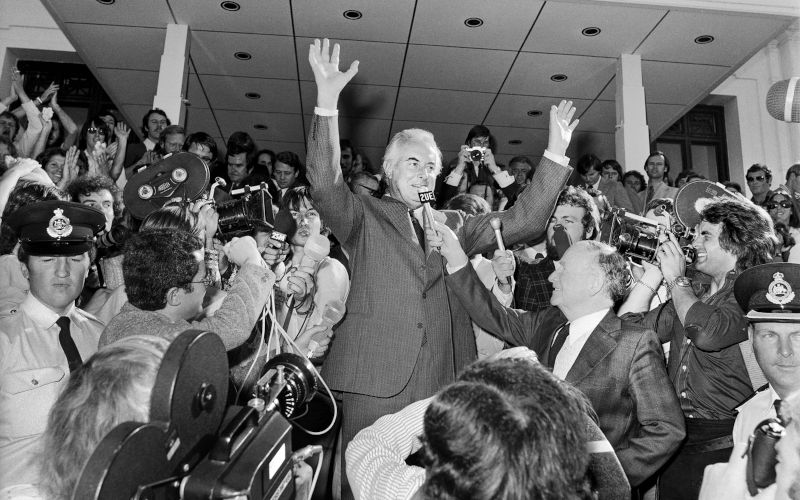
21 November 2025
Denouement: trapped between empires - Part 6
“What you in Australia must understand is that you are more to blame than the CIA. You want this to happen, you want a certain administration in control, and you don’t want another administration in control. Do the loyalties of your intelligence services lie with your country as a whole or with the establishment in your country? In most instances, the answer you find is with the establishment.” Victor Marchetti, former CIA officer and deputy director at Pine Gap.
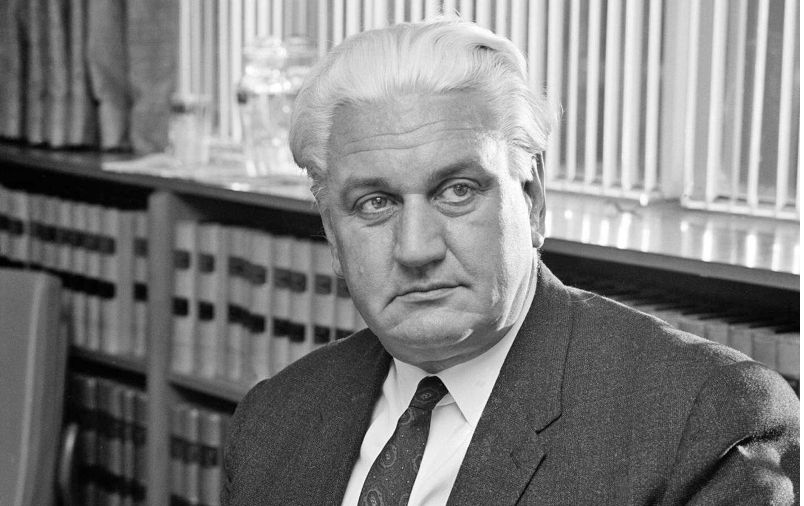
18 November 2025
‘My Viceroy’ - Part 5
I thought it no bad thing that the public in Australia and, perhaps, also those in other monarchical Commonwealth countries, not excluding Britain, should have been reminded that the Crown possessed reserve powers.” Sir John Kerr to the British High Commissioner to Australia, December 1975.
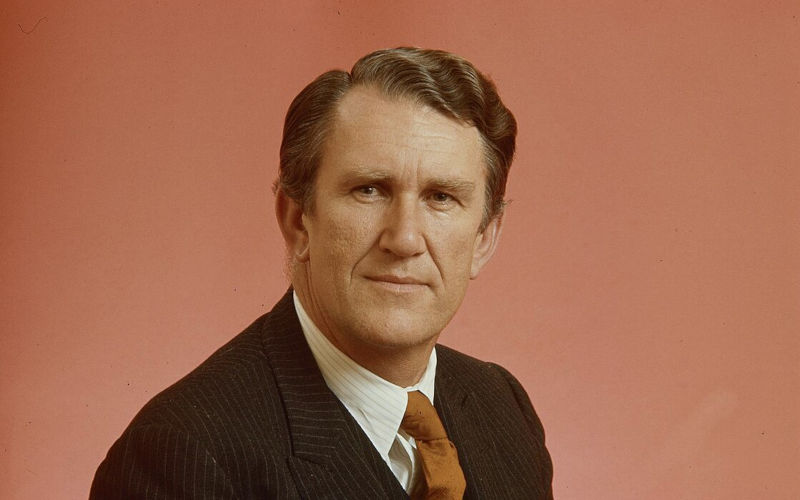
13 November 2025
‘Extraordinary and reprehensible circumstances' - Part 4
Malcolm Fraser was a conservative in terms of the constitution. His view was the Senate was primarily a house of review – and apart from exceptional circumstances should not frustrate, certainly not on a purely obstructionist basis”

12 November 2025
‘Spooky fiddling’: Preparing the ground – Part 3
There is profoundly increasing evidence that foreign espionage and intelligence activities are being practised in Australia on a wide scale… I believe the evidence is so grave and so alarming in its implications that it demands the fullest explanation. The deception over the CIA and the activities of foreign installations on our soil… are an onslaught on Australia's sovereignty. – Gough Whitlam, House of Representatives, 1977

11 November 2025
Whitlam and the White House – Part 2
“Australia and the territories under its control have become increasingly important to the US defence and space establishments in recent years as a site for satellite tracking stations, nuclear test detection facilities, space research and related activities. With ample space, relatively advanced technology, political stability and conservative government, Australia has become a uniquely desirable base for both military and civilian programs involving operations in the Southern Hemisphere.” – White House position paper, 1962, quoted in Brian Toohey, Secret.

10 November 2025
‘Mr Whitlam’s style’ – Part I
“I had no contemporary political heroes. I preferred Labor values to Liberal ones. I believed in a mixed economy. I disliked the people who’d got us into the Vietnam war. I was grateful to those who’d got us out. I admired Gough Whitlam, but not as much as he did.”
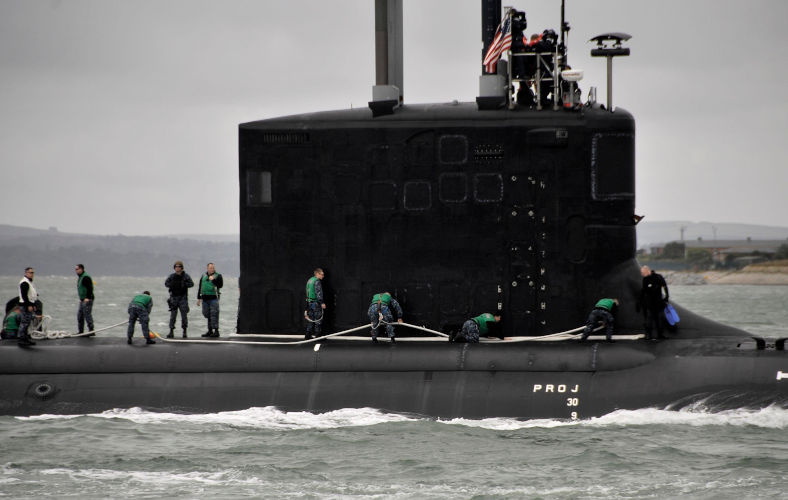
30 August 2025
Ditch AUKUS Pillar One. It involves Australia too much in US strategy
Defence Minister Richard Marles said in June that if war broke out between the US and China, Australia would inevitably be involved.

21 February 2024
Bewilderingly unsophisticated: ASPI deputy director fires up China threat megaphone
Alex Bristow’s recent piece on China (“Don’t sidestep the China problem in public debate on defence”, Australian Financial Review, 14 February) demonstrates the extent to which the Australian Strategic Policy Institute has become a cheerleader for the US military-industrial complex.
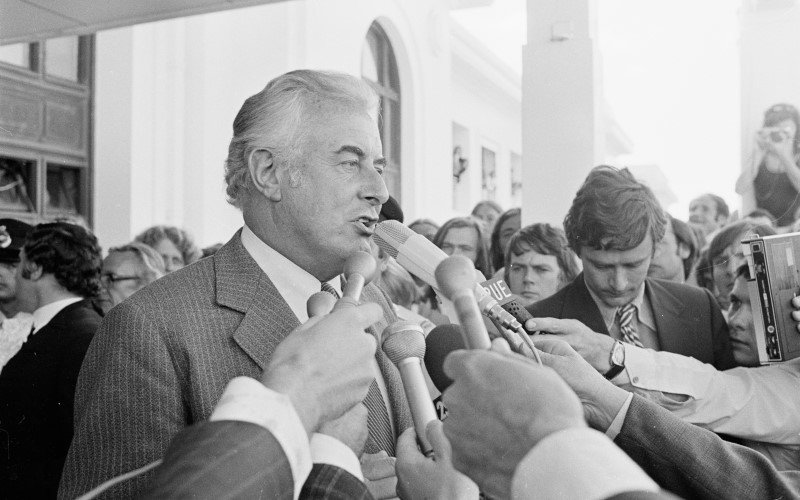
8 January 2024
Covert forces and the overthrow of Edward Gough Whitlam: The series
The dismissal of Australian Prime Minister Gough Whitlam by Queen Elizabeth’s Vice-Regal representative, Sir John Kerr, was an extraordinary event. For almost fifty years a debate has raged about why the Governor-General took the unprecedented action he did on 11 November 1975. This five-part series puts a spotlight on the on the external events that were in play at the time

21 December 2023
Australia sleepwalking into catastrophic conflict with China
Gareth Evans’ review of Australia’s strategic relationship with the United States (“Why Australia can’t rely on the US to save it from China,” 12 December) provides a timely wake-up call on the dangers of Australia sleepwalking into what would be a catastrophic conflict with China.

24 November 2023
Covert forces and the overthrow of Edward Gough Whitlam: The Series
The dismissal of Australian Prime Minister Gough Whitlam by Queen Elizabeths Vice-Regal representative, Sir John Kerr, was an extraordinary event. For almost fifty years a debate has raged about why the Governor-General took the unprecedented action he did on 11 November 1975. This five-part series puts a spotlight on the on the external events that were in play at the time

24 November 2023
The Overthrow of Edward Gough Whitlam: A stain on Australia’s democracy - finale
“Gough Whitlam was an Australian democrat. He passionately believed in our institutions; the supremacy of parliament, the independence and integrity of the judiciary and the separation of powers to curb possible abuses by the executive government. In the dismissal these institutions failed us. Those with responsibility deceived us. Tradition and conventions built over centuries were trashed. The damage to our public life goes far beyond the injustice done to Gough Whitlam.” - John Menadue, ‘Postscript’, Pearls and Irritations

12 November 2023
Whitlam’s overthrow: Queen’s Gambit to checkmate. Part 5
“Well, how about a call from the CIA to MI6 saying we have a security problem in Australia? More than one call. Dozens of calls. We have a security problem with the Prime Minister. He's endangering national security for the United States and the Alliance. The evidence is he is making noises about our bases, he's making threats; those bases are absolutely essential to the survival of the Alliance. Now what caused the Brits to act? They made a recommendation for the demise, yes. And in a way, it allowed a duly elected Prime Minister to be tossed out of...

11 November 2023
Spooky fiddling: The CIA playbook and the overthrow of Whitlam. Part 4
In a telephone conversation between Kissinger and Nixon following the 1973 military coup d'état in Chile, the President asked if “our hand” showed in the overthrow and death of the democratically elected President Allende. Kissinger explained that “we didn't do it”, in terms of direct participation in the military actions. “I mean we helped them”, Kissinger continued, “[redacted words] created the conditions as great as possible.”

10 November 2023
Cold War imperatives: Whitlam and the US National Security Council. Part 3
In July 1975, Malcolm Fraser spoke to US Ambassador Marshall Green about the Labor government’s alleged “desire for a ‘non-aligned position in world affairs’”. In fact, he added, ‘Whitlam and others may be trying to cause the US to take the lead in abandoning ANZUS’.”
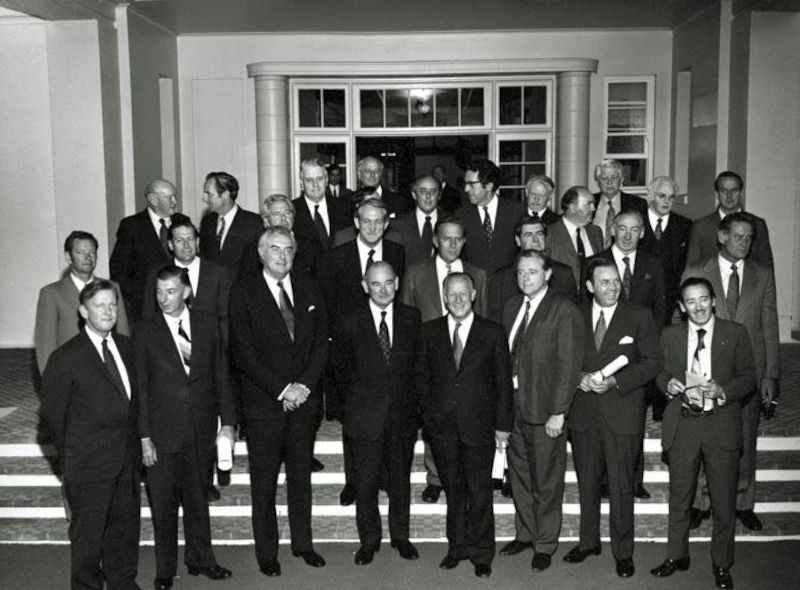
9 November 2023
Stress testing the US alliance: Whitlam and the secrets of Pine Gap. Part 2
When Marshall Green, a very senior official in the State Department, was appointed as Ambassador to Australia in early 1973, President Nixon’s briefing regarding the relationship with Whitlam was succinct and on point: “Marshall, I can’t stand that cunt”. Green later reflected this was “a strange kind of parting instruction to get from your president”.

8 November 2023
“Shame Fraser, shame”: The overthrow of Edward Gough Whitlam. Part 1
When offered the position of Governor-General by Prime Minister Whitlam in 1974, Sir John Kerr consulted friends and colleagues as to whether he should accept the appointment. One of them, Justice Robert Hope, queried why he would take such “a dead-end job, a hopeless job.” Kerr’s response was: “Oh, no, it’s a very powerful position. It has much more power than you realise.” - Jenny Hocking, Gough Whitlam, Vol. II.
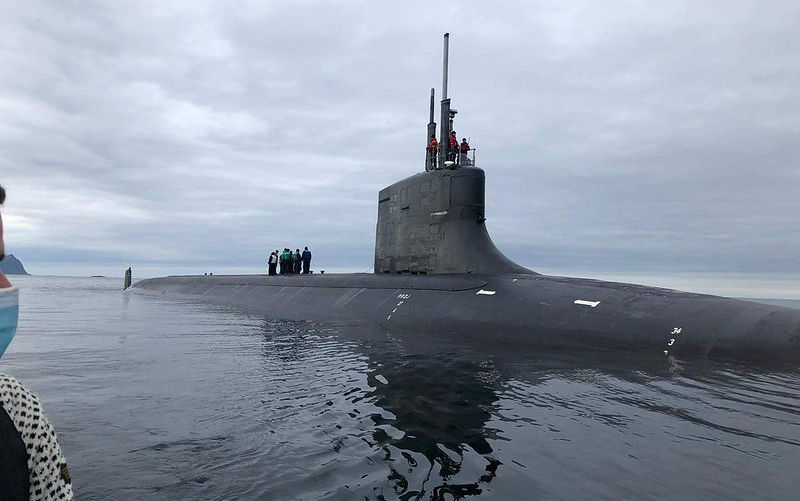
27 February 2023
SSNs for the RAN: A response to Brian Toohey
Brian Toohey (Pearls and Irritations, 14 February 2023) makes a number of criticisms of the recent four-part series on national security by Michael Keating and myself that was published in Pearls and Irritations earlier this month. He contends that we have made “assertions that should not go unchallenged”, particularly in regard to our support for the acquisition of nuclear-powered submarines (SSNs) by the RAN.
11 February 2023
A sovereign SSN capability and Australia’s national security strategy
There is no way that the UK or the US would ever contemplate surrendering sovereignty over the control of its military operations to any other power. Australia should not either. If Australia is to acquire a fleet of SSNs, the government needs to negotiate an agreement that avoids counter-productive short cuts and ensures sovereign control of what would be an immensely valuable capability for the Royal Australian Navy.

10 February 2023
Hard power and Australia’s national security strategy
The previous two parts in this series addressed soft power and Australia’s alliances respectively. The focus of Part 3 is hard power and a discussion of self-reliance and Australia’s evolving military strategy.

9 February 2023
The role of alliances in Australia’s national security strategy
While alliances and treaties offer some protection against an aggressor, they cannot be counted upon. Australia needs to maintain an independent military capability to deter possible future threats to our independence – not least because we cannot rely on the US in all possible future circumstances.

8 February 2023
Australia’s National Security Strategy
To paraphrase former US President, Theodore Roosevelt, Australia’s national security is best achieved by talking softly while carrying a formidable stick as a deterrent.
22 September 2021
The AUKUS pact: ‘If you want peace, prepare for war’
Australia's nuclear-power submarines will greatly enhance Australia’s ability to provide for its own self-reliant defence. Nevertheless, the new strategic approach confronts us with a number of almighty challenges.
12 July 2021
Why is Australia still investing in a balanced defence force?
When the Prime Minister recently compared Australia’s strategic situation to that in 1939, he was right in two respects. Both in 1939 and in 2021, we have put too much trust in a ‘great and powerful friend’ to secure our independence. Australia’s problem is a Defence department that, simply put, lacks foresight, resourcefulness and innovation.
21 April 2021
Vale Gary Johnston, founder and sponsor of the Submarines for Australia group
Gary Johnston sadly died after a short illness on 10 March 2021. Gary was the founder of the Submarines for Australia website and the generous sponsor of the associated research, submissions and reports published on the site.
29 October 2020
The smart money is that in defending Australia we will be on our own. Part 3
The government’s recent Defence Strategic Update suggests Australia faces the greatest threat to our independence since 1942. In this final article of three, I consider the need for a Review, both to design a new Australian military strategy and analyse the essential elements of the new force structure that this will require.
28 October 2020
Part 2. Australia’s Defence Strategy: built-in resistance to change
The government’s Defence Strategic Update suggests Australia faces the greatest threat to our independence since 1942. This demands a sophisticated diplomatic strategy, the development of a sound military strategy and the careful analysis of how to deliver an appropriate force structure so as to address the threat in an acceptable timeframe.
27 October 2020
Sharp-edged but sophisticated diplomacy needs to underpin our defence strategy Part 1
The government’s recent Defence Strategic Update suggests Australia faces the greatest threat to our independence since 1942. This demands a sophisticated diplomatic strategy, the development of a sound military strategy to deter an attack by a great power and careful analysis of how to design the right force structure to deliver it. This first article of three looks at the issues around diplomacy.
21 October 2020
What should Australian submarines do? – Response to Brian Toohey
Brian Toohey’s challenging post (19 October) concerns what we want our submarines to do. In light of the recent Defence Strategic Update, the ADF needs to build a force capable of deterring an attack by a major power.
29 April 2020
JON STANFORD. A Response to Michael McKinley on Future Submarines
In a series of five pieces in Pearls and Irritations last week, Dr Michael McKinley cites the recent report by Submarines for Australia at some length. While I acknowledge some of Dr McKinley’s concerns about our approach, it is not clear to me what he is proposing in its place. But insofar as I understand his criticisms I will respond to them in three areas below.
31 January 2020
JON STANFORD: Second rate leadership: Future Submarine Part 4 of 4
I have suggested that recent governments have failed to provide leadership in the defence portfolio. Nowhere is this more apparent than in the case of SEA 1000, the future submarine program.
30 January 2020
JON STANFORD: Second rate leadership: Future Submarine Part 3 of 4
I have suggested in earlier posts that recent governments have failed to provide leadership in the defence portfolio. Nowhere is this more apparent than in the case of SEA 1000, the future submarine program.
16 January 2020
JON STANFORD: Second rate leadership Part 2 of 4: Defence
“Australia is now a confident, wealthy nation that has the right to expect its leaders to rise above the second rate.”
10 January 2020
Second rate leadership. Part 1 of 4
Australia is now a confident, wealthy nation that has the right to expect its leaders to rise above the second rate.
14 February 2019
JON STANFORD. Comment on Mike Scrapton's article 'The casual talk of war'.
Isn’t it interesting that in the Prime Minister’s attempt yesterday to make us all very frightened indeed about the national security threats that a Labor government would expose us to — ranging from hordes of asylum seekers at the gates, including paedophiles and murderers in their ranks, to increased domestic violence against women — he completely forgot to warn us about the elephant in the room, namely a major war in the South China Sea over Taiwan. This is now widely canvassed among academic strategic experts, including Hugh White and Paul Dibb, as being distinctly possible in the not too...
6 October 2018
JON STANFORD. The Future Submarine: Time for a Review
One year ago, Insight Economics, sponsored by Sydney businessman Gary Johnston, published a comprehensive, independent report on the future submarine (FSM) acquisition. Launched at the National Press Club by Professor Hugh White and Dr Michael Keating, the report highlighted the excessive cost of the FSM; its unacceptable delivery timetable leading to a dangerous capability gap; the extremely high risks around the capability it would deliver; and the challenges and high cost surrounding a life extension of the obsolescent Collins class submarines. Over the past year, nothing has occurred to change these conclusions. Indeed, recent developments have only served greatly to...
12 October 2017
JON STANFORD. Australia’s Future Submarine. Part 3 of 3. Responding to the criticisms
At the National Press Club in Canberra on 27 September 2017, Hugh White, Professor of Strategic Studies at the ANU, launched an independent report by Insight Economics on Australia’s future submarine (FSM). The report, Australia’s Future Submarine: Getting This Key Capability Right, was commissioned by Gary Johnston, a Sydney businessman and owner of the website, submarinesforaustralia.
10 October 2017
JON STANFORD. Australia’s Future Submarine; Part 2 of 3 : Addressing the problems in a second-best world
At the National Press Club in Canberra on 27 September 2017, Hugh White, Professor of Strategic Studies at the ANU, launched an independent report by Insight Economics on Australia’s future submarine (FSM). The report, Australia’s Future Submarine: Getting This Key Capability Right, was commissioned by Gary Johnston, a Sydney businessman and owner of the website, submarinesforaustralia.
9 October 2017
JON STANFORD. Australia's Future Submarines: A response to Christopher Pyne
Last week at the National Press Club, Hugh White launched a report by Insight Economics, Australia's Future Submarine: Getting This Key Capability Right, of which I was the principal author. The report was sponsored by Gary Johnston, a Sydney businessman with no commercial interest in the SEA 1000 Future Submarine (FSM) program but an abiding concern with the waste of taxpayers' money in failed defence acquisition projects.
2 October 2017
JON STANFORD. Australia’s Future Submarine - Part 1: The problems
At the National Press Club in Canberra on 27 September 2017, Hugh White, Professor of Strategic Studies at the ANU, launched an independent report by Insight Economics on Australia’s future submarine (FSM). The report, Australia’s Future Submarine: Getting This Key Capability Right, was commissioned by Gary Johnston, a Sydney businessman and owner of the website, submarinesforaustralia.
12 June 2017
JON STANFORD. Brexit and some lessons from the British election.
Despite recent disruptions in the comfortable world of electoral punditry – Brexit, Trump, even Macron – when Theresa May called a British general election in April, the only question was how many additional seats the Conservatives would win.
16 December 2016
JON STANFORD. Australia’s climate change policy mess: quo vadis?
Make no mistake: Malcolm Turnbull’s pusillanimous refusal even to consider the option of an emissions intensity scheme (EIS) for electricity generation represents a massive abdication of responsibility to the Australian community.
4 October 2016
The French submarine boondoggle
Is DCNS's imaginary Shortfin Barracuda submarine Australia's biggest defence blunder? The Turnbull government’s decision on the future submarine (FSM) represents bad policy. It is bad for the Navy, bad for the taxpayer and bad for the future defence of Australia. Given the key role the FSM is meant to play in the future of the naval shipbuilding industry, it is also bad news for South Australia. The Navy’s requirement is for a uniquely large conventional submarine (SSK) that can undertake force projection missions far from home. This in itself raises important strategic questions. Is this an appropriate role...
22 September 2016
JON STANFORD. Business welfare under the Coalition: two case studies (2)
This is the second of two articles by Jon Stanford on the Coalition’s approach to industry protection and ‘business welfare’. Part 1 (Motor Cars) can be found at Jon Stanford. Business welfare under the Coalition: two case studies. Naval shipbuilding At the outset, we need to understand that there are no significant defence reasons for building naval platforms in Australia. Self-reliance means that Australia must be capable of maintaining its defence platforms and systems to a high standard and returning damaged assets to full availability as quickly as possible. Australia does not produce a single missile or weapons...
16 September 2016
JON STANFORD. Business welfare under the Coalition: two case studies (1)
The Abbott government came to power with a Treasurer who announced that the “age of entitlement” was dead and that he had no time for “business welfare”. In these two articles, Jon Stanford examines how this philosophy has been applied since 2013 to two manufacturing industries, passenger motor vehicles (PMV) and naval shipbuilding.
2 August 2016
JON STANFORD and JOHN MENADUE. The submarine confusion continues. Is the way being prepared for Australia to acquire nuclear submarines?
REPOST In an interesting development relating to Australia’s new submarine acquisition, Peter Jennings, Executive Director of the Australian Strategic Policy Institute (ASPI), has written a piece in The Australian (7 June 2016) that is clearly at odds with the Institute’s previous public stance. Jennings says that while conventional power for Australia’s submarines has previously been an article of faith, “the capabilities required for our future submarine would in many ways be better performed by nuclear-powered boats”.
29 June 2016
JON STANFORD. Brexit - UK is unprepared.
The thrust of Michael Keating’s essay on Brexit is that the vote in favour of leaving the European Union taken by the British electorate on 23 June will be bad for the UK but will have a minimal impact on the rest of the world. If the British government accepts the advice put forward in what is an advisory referendum, Dr Keating may very well be correct. Already significant damage has been done to the UK economy, even before Article 50 has been triggered. The exchange rate for the pound is in a nosedive, some banks have lost 40...
5 May 2016
Jon Stanford. French submarines and the East and South China Seas. – why?
A response to Richard Broinowski. While the government might emphasise the roles for the new submarine that may be regarded as defensive – “intelligence, surveillance and reconnaissance” – Richard Broinowski ignores perhaps the most important role, namely power projection in the East and South China Seas. This role was perhaps most graphically illustrated the Rudd government’s 2009 White Paper, which first made the case for 12 powerful new submarines. Rather extraordinarily, that White Paper mooted the possibility of unilateral action by Australia against a ‘major adversary’: “But we do assume that, except in the case of nuclear attack,...
16 March 2016
John Stanford. Technology, economics and Australia’s future submarine. Part 3 of 3.
Part 3: Implications: a more efficient and less risky approach Introduction The purpose of this three-part article is not to question the government’s requirement for advanced submarine capability but rather to explore some of the technological, economic and financial issues, and the associated risks, around the programme by which the government is seeking to deliver this capability. After all, it is not the new submarines themselves that constitute the objective of this major programme, but rather the capability they will deliver. If this capability could be provided more efficiently and at less risk, there would be clear benefits for...
16 March 2016
Jon Stanford. Technology, economics and Australia’s future submarine Part 2 of 3.
Part 2: Economic and financial risks Introduction The first part of this article considered the technological risks involved in the decision, as set out in the 2016 Defence White Paper, to procure twelve new submarines at an acquisition cost of at least $50 billion. The economic and financial risks of this project are discussed here in Part Two of the article. There is a considerable literature on the economics of defence procurement but the fundamental principles of economics, including corporate financial analysis, can readily be applied to military programs. Any major investment program to acquire a new or...
Showing 50 of 58 articles
